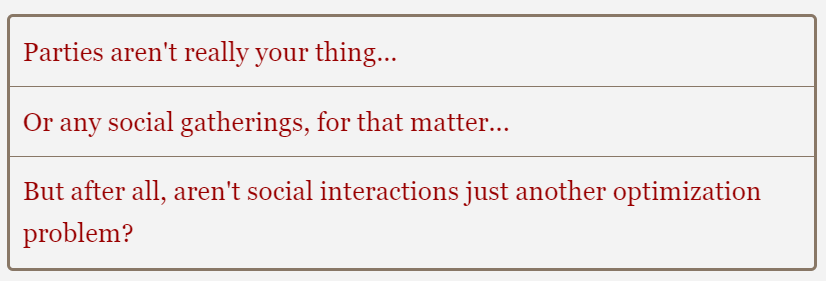I thought it would be nice to take a break over at golmac.org to review some Spring Thing games. I will not attempt to review every entry. In fact, I only plan to highlight games that I especially enjoy or that otherwise interest me critically. If I don’t review your game, that doesn’t mean that I didn’t like it; perhaps I haven’t gotten to it yet.
I’ve got a randomized list that I will work through in order, no cheating.
Anyway, I’ll post a digest of reviews at Gold Machine on Monday(s). Not sure how long I’ll do this; two weeks, maybe? Or else I’ll stop whenever I got frozen out for replying to myself five times in a row, whichever comes first ![]()
Crow Quest by Rookerie
Art by Kate Thompson
I think that an RPG-lite game about an ambitious Birmingham (I’m hazarding a guess from all the way down in southern Louisiana) crow is a fantastic idea and wonder how we are just now getting one. It begins with the player making a few choices: name, whether to team up with another crow, and what items to bring with them on their quest. The chosen inventory items afford extra options during the randomly-selected encounters with mean schoolkids, cats, and the like.
Successfully completing each encounter adds to the crow’s “attitude” (here measured numerically). Once it has reached a specific threshhold, the crow is either “KING OF THE RUBBLE,” or else must fight their partner for the top spot. I enjoyed the humor very much: many of the encounters are funny, and the narrative voice/presentation seems well-aligned with the subject matter of Crow Quest.
I do think that the randomly-selected encounters can make for an uneven experience. The pool of options is modest, so it is possible to expend your inventory items then repeat the same encounters (many of them failed) hoping for enough consecutive dice rolls to reach the end. By the same token, the responses for the rock-paper-scissors climactic battle are funny once, but the fight usually takes several turns to complete. Crow Quest is an enjoyable concept that could be more enjoyable still if randomness and luck were more tactically employed or funneled.
I should mention the artwork by Kate Thompson, which is striking, memorable, and perfectly suited to the mood of Crow Quest.
I do hope there will be a later and possibly expanded release. I would be eager to return.


